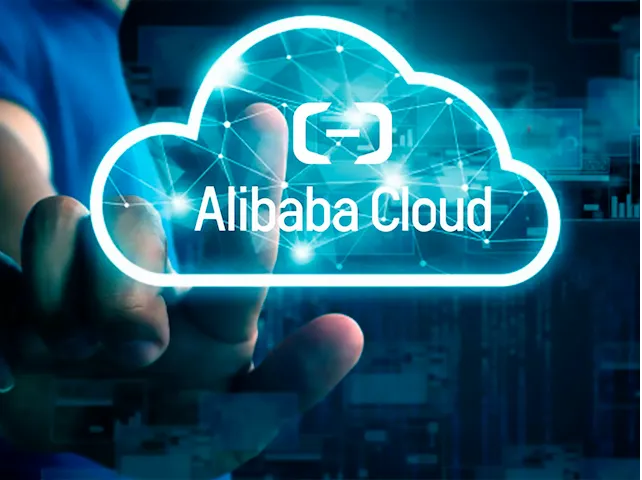
Intro
I always believed in the horizontal approach to learn the cloud rather than the vertical method. I’m just convinced there is more to learn when you open your perspectives, even if you lose the ability to narrow your expertise on one platform. That’s a little price to pay if you want to broaden your lenses. This is why after exploring AWS, Azure, OCI, & GCP, I decided to sneak into Alibaba Cloud.
In this blog post, I will introduce you to Alibaba Cloud through a little tour of the provider’s interface, available offering along with billing options. I’m hoping to find helpful insights on the user experience while navigating this platform based on my multi-cloud background. All while staying fair and unbiased so we can solely focus on the technical aspect (geopolitical considerations aside) .
Table of contents
Is Alibaba Cloud a thing :)?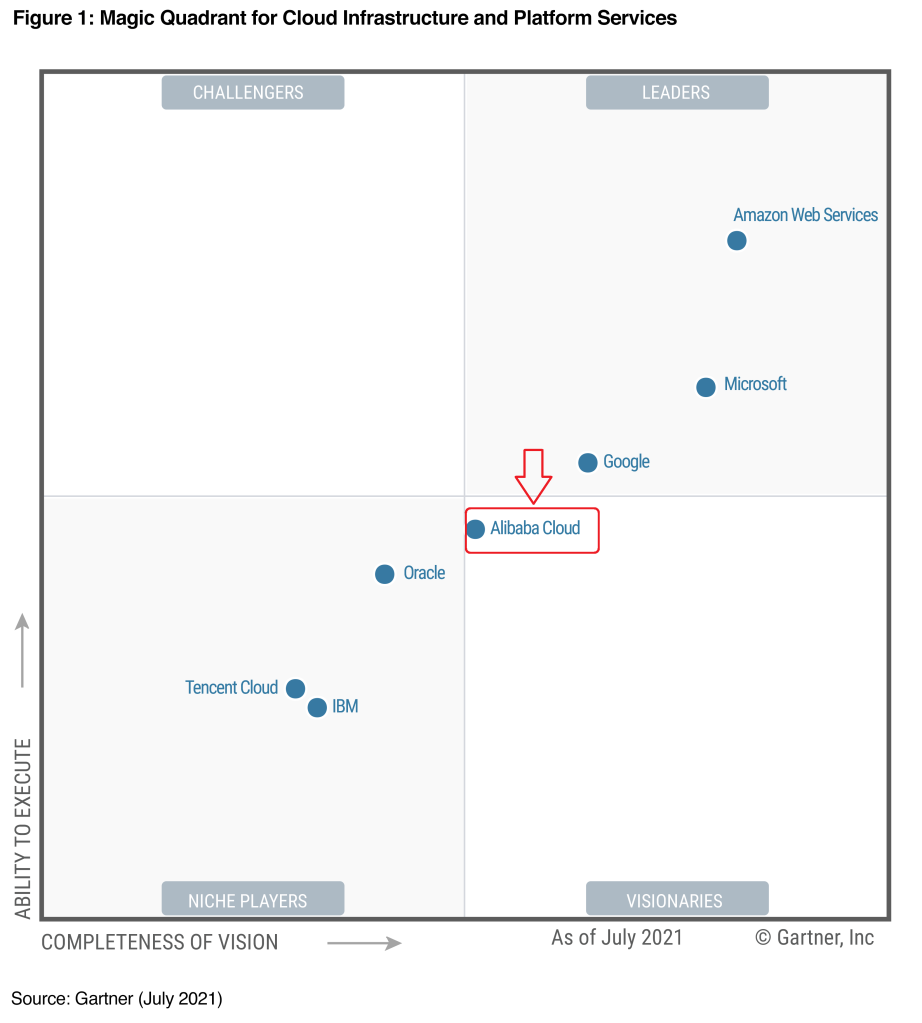
If you ever doubted on the role of Alibaba in the Cloud World, here’s a memo to catch up on. Alibaba Cloud market share overtook GCP to become No.3 Worldwide in 2021 (9.5% or $8.7 Billion). It has also moved from "Niche Players" quadrant to the "Visionaries" quadrant in the Gartner 2021 report for Cloud Infrastructure & Platform services, reaching the 4th place.
Did you know that Aliyun (translated “Ali Cloud”) was the original name of the company until 2017? You can still see it hardcoded in their Console sub-pages URL.
Regions
Alibaba Cloud operates in 27 regions totaling 84 availability zones around the world with more regions set to follow. Huge presence in the Asia-Pacific area with 13 regions for China only, and new ones in S-Korea/Thailand.
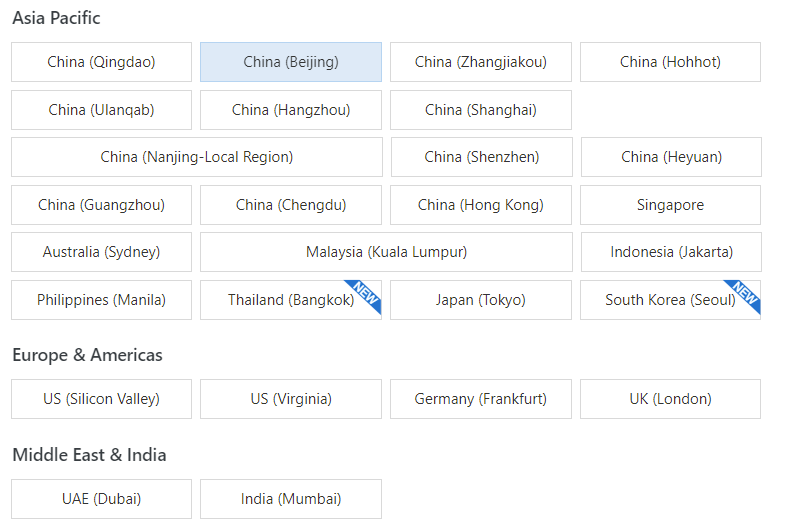
Alibaba Cloud CDN service leverages a network of 2800 nodes in 70 countries across the globe (2300 in China)
Alibaba Cloud free tier
The Alibaba Cloud Free Tier provides FREE Cloud services Including 50+ Free Offers Worth $1700-$8500 USD.
The offers are time based (1-12 Months) and sometimes based in cash credit for both Individuals and enterprises.
Here are some Cloud services/products you’ll get for free and their period of availability.
Compute
Simple Application Server-Linux (1CPU, 1G, 20GB Disk, 4Mbps ) 3 months (+ preinstalled app)
ECS- Burstable t5 (1CPU, 1GB , 40GB Disk, 1Mbps) 12 months
ECS- Shared Compact Type xn4 (1CPU, 1GB , 40GB System Disk, 3Mbps) 3 months
Note: Activating the free trial on ECS will disqualify you from using free trial on Simple Application Server.
Other
Server Load Balancer: $15 Credit
Alibaba Cloud CDN 6 months
Object Storage Service 500 GB 1 month
File storage NAS 100 GB 1month
Tablestore 500 GB storage 750 hrs instance $19 Credit
Hybrid Backup Recovery 100 GB storage 3 months
ApsaraDB RDS for MySQL/PostgresSQL Dual hot-standby nodes or single node (20GB storage) 1 month
ApsaraDB for Redis 4 GB instance 1 month
ApsaraDB for MongoDB 3 nodes
+20 Gb storage 1 month
Elasticsearch 3 nodes (2CPU, 4GB) 1 month
Developer After-sales support plan 1 month
API Gateway 1 MM calls/month 1 year
AI (image Search, speech interaction) 1-6 month
If you want to check the full package you can dig through here: Alibaba-Fee-trial
Alibaba Cloud free usage tier expiration
These free tier offers are only available in the first for 12 months following your the sign-up date. After a year
or when your service use exceeds the tiers, you simply switch to pay-as-you-go service rates.
Note: Fee usage does not accumulate.
Alibaba Always Free Services
These services are,obviously, always free because they are merely services to manage cloud native resources like Container Registry, VPC, Basic monitoring tools, etc.. It is implicitly free for all other Cloud providers, so I’ll pass.
Interface
Here we see a `feel and look` that’s pretty close to AWS. Even the ECS(Elastic Compute Service) is likely derived from AWS EC2.

The annoying things are:
Some links will open a new page which can led to a chrome tab chaos after few clicks.
Beware, if you have Cloud shell open, any click on your main page will refresh the whole thing and you’ll loose all what you were working on in the terminal.
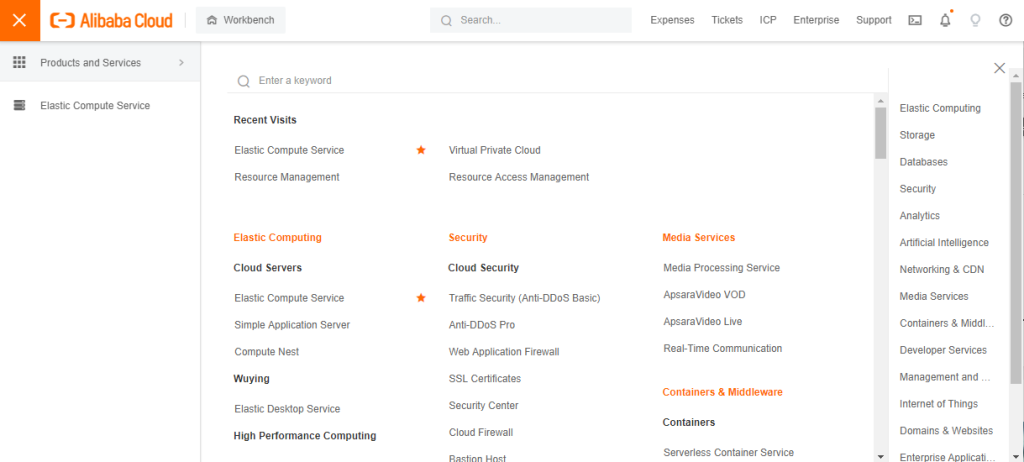
I don’t know about you, having the category of resources listed on the right side of the screen is not super intuitive.
Billing
Did you know Alibaba is the only Cloud that also takes PayPal as payment method?That’s actually quite cool, no more credit card needed as PayPal can be linked to your Debit cards.
Unfortunately, Free tier credit can’t be used if PayPal is the unique payment configured in your account (PAYG) .
.
Billing options:
What struck me is everything you deploy ends up with a Buy or Add to Cart button, as if you were shopping on amazon. It doesn’t matter what Billing Method you choose.
Subscription: Allows you to use a resources only after you pay for them (at discounted rates).
You can choose 1 month to 1 year ( i.e USD 155/month = USD 0.215/hour)
Renewal: This is a very weird feature and even dangerous sometimes.
By default, AliCloud resources will just run for a duration chosen at creation but after say 1month you’d have to renew manually. Meaning you can end up with a total mess if you have a dozen of instances with different expiration dates. Hence Auto-Renewal safety.

Pay-as-You-Go: Bills you for the exact amount of resources you use on an hourly basis.
example : polar.mysql.mmx4.large4 => USD 0.323/hour
Can be paired with PayPal but not enough to use Free tier resources
Reserved instance and saving plans: these are similar to what AWS offers
Network
Same here, the naming convention doesn’t go far from AWS. VPC is also present in Alibaba but funny enough this is the only vendor I know who has a unique name for subnets. In Alibaba Cloud it is rather called vSwitch.
There can be a maximum of two VPCs per account for starters.
The VPC CIDR bock size can be from /8 to /24
The VSwitch CIDR block size can be from /16 to /29.
You can expand a VPC by adding a secondary CIDR block to the VPC. (kinda like GCP)
VPC is their 2nd gen and more isolated network which is slowly replacing their 1st gen Classic Network.
See comparison below

Traffic vs bandwidth pricing
When assigning a Public IP Address to your compute instance, you have 2 billing choices for the egress traffic

Pay-By-Bandwidth
Based on a specified outbound bandwidth (i.e 3Mb/s). Fees are added to Total ECS instance fees.
Pay-By-Traffic
Based on the actual amount of the outbound traffic usage in GB per hour.It is a postpaid billing method.
Compute
The Compute is the cornerstone of any Cloud provider , naming convention are –as expected- pretty similar with AWS. ECS (Elastic compute service) for EC2. With different instance families and architectures.
See full list >> here or here
Architecture: X86, ARM, Bare Metal , heterogenous (With GPU/NPU)
Category: General Purpose, Compute/Memory optimized, big data, high clock speed,local SSD
Type: Regular, Burstable (i.e baseline of 20% CPU), Preemptible Instance (aws spot instance)
OS: The usual windows and Linux distributions including Alibaba Cloud Linux
Storage: EBS disks are SSD minimum, no HDD available.
Pricing: PAYG or subscription based and usual discounts through Reserved Instances and Saving Plans.
Please have a look at the full detailed pricing >>here
Deploying in China regions
Beijing region, allows you span deployments through a whooping 12 Availability zones.
That’s what I call a “Mega” High availability plan ;)
Beware, local regulation still requires your identity registration including your passport number

Simple Application Server(SAS)
SAS is a lightweight compute product that provides ready-to-use applications to help build websites or other developments stacks with Custom Application Images. Worth a try.
Features
14x Application Images (WordPress, LAMP, Docker, Plesk,Drupal, cPanel..) Autoconfigured
6x OS images
Integrated with many AliCloud Services in few clicks (DNS,WAF,CDN, Firewall, ApsaraDB RDS)
As low as US $3.5/month with enhanced SSDs (ESSDs)

Automation (IaC)

API based Management tools are also to a good cloud automation and governance. Here are the tools I found.
OpenAPI Explorer: allows you to retrieve/call API operations, & dynamically generate SDK sample code.
Alibaba Cloud SDK: For several languages(Java, Python,PHP) to build and manage AliCloud services.
Operation Orchestration Service (OOS): Automatically manages and executes O&M(operations & maintenance) tasks. You can define items such as execution tasks, sequence, & inputs and outputs in execution templates and use the templates to automate O&M tasks (i.e check CPU% and scale).
Resource Orchestration Service (ROS):
This is a user-defined templates similar to AWS Cloudformation. I said similar but it’s an understatement :).
Just look at this Cloudformation–to-ROS converter below
Command : $ rostran transform ./cloudformation/vpc_sg.json --target-format json
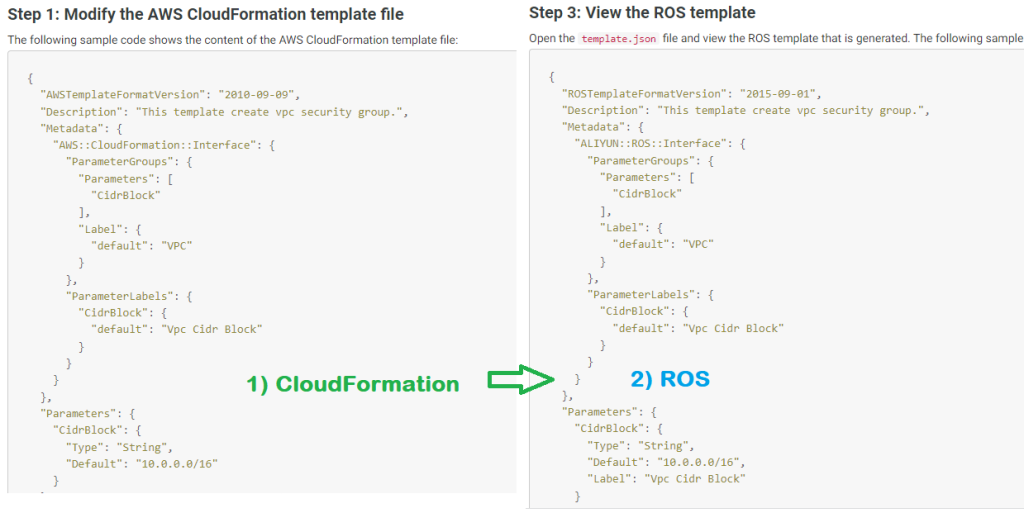
CONCLUSION
That’s it I said I’ll give some time to explore my 5th Cloud provider and it has finally happened.
It was supposed to be a little one pager on the Alibaba Cloud Free-tier but I dug deeper than I should :)
I hope that the above (deep dive) introduction gave you a glimpse of what to expect on Alibaba platform
Part 2 and 3 will cover Alibaba Cloud CLI installation and a terraform deployment of a website
Stay tuned




 .
. 






